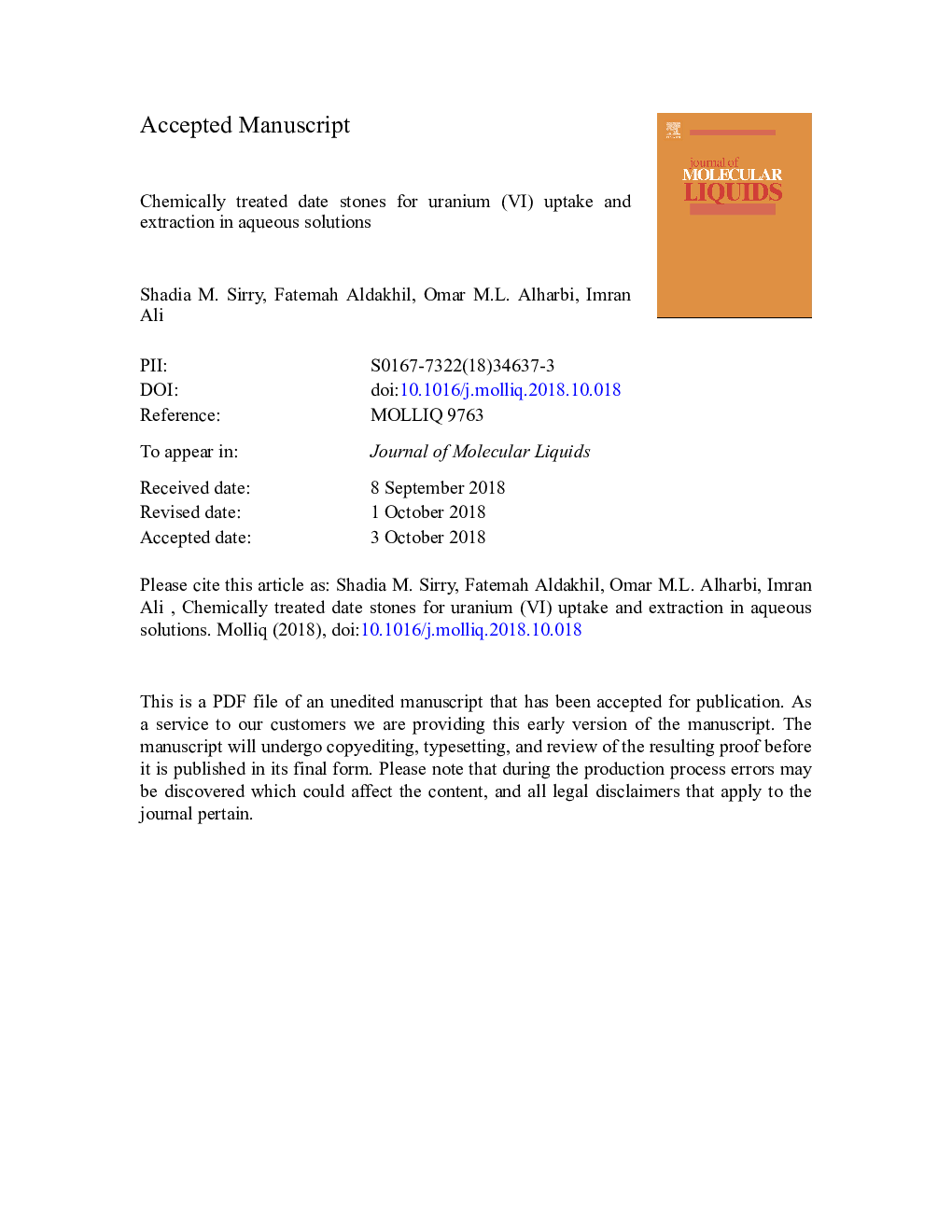| Article ID | Journal | Published Year | Pages | File Type |
|---|---|---|---|---|
| 11262933 | Journal of Molecular Liquids | 2019 | 39 Pages |
Abstract
In this study, the uptake and consequent extraction of U(VI) in aqueous solutions were investigated using chemically treated date stones (DS) as a low-cost, eco-friendly, locally available and effective natural adsorbent. Petroleum ether (PE), hydrochloric acid (HA), sodium carbonate (NaCO3), a combination of PE and HA treatments and PE and NaC treatments were utilized to improve the adsorption capacity of DS for U(VI), which was determined spectrometrically after being complexed with 4â(2âpyridylazo)âresorcinol (PAR). The changes in the treated DS were characterized and compared with the raw material by Fourier transform infrared (FTIR) spectroscopy before and after the uptake process. The surface of the treated DS was observed using a scanning electron microscope (SEM) to illustrate the change in the surface feature after adsorption. Batch experiments were carried out in studies of U(VI) adsorption from aqueous solutions. The base treatment (NaCO3 and PENaCO3) of DS appeared to be the least successful in enhancing the uptake of U(VI), while the best result was obtained with DS-PEHA and DS-HA. The maximum adsorption capacity of DS was found to be 19.6 and 17.86â¯mg/g for a U(VI) uptake onto DS-PEHA and DS-HA, respectively at the equilibrium time of 120â¯min. The kinetic model conformed successfully to the pseudo-second-order equation, while the isotherm data was modeled best by the Langmuir equation for U(VI) adsorbed on most treated DS. The enrichment factor for the pre-concentration of U(VI) was found to be 50, and the maximum elution of U(VI) was performed with 2.0â¯Mâ¯Lâ1 of HNO3.
Related Topics
Physical Sciences and Engineering
Chemistry
Physical and Theoretical Chemistry
Authors
Shadia M. Sirry, Fatemah Aldakhil, Omar M.L. Alharbi, Imran Ali,
